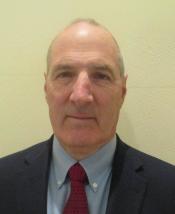Robert M. Habiger
Rob Habiger holds Bachelors, Masters, and Ph.D. degrees in physics. He worked for ConocoPhillips for over 28 years in various scientific and management capacities in the disciplines of petrophysicis and geophysics. While there, he held various positions in research & development and in international exploration, including Manager for Seismic Technology in the Houston corporate offices. He joined Spectraseis as Chief Technology Officer in February 2007 where he was responsible for all technical aspects of the company’s research and commercial offerings in passive seismic technology. These programs and products include microseismic monitoring associated with hydraulic fracturing, induced/triggered seismic monitoring, and hydrocarbon reservoir fluids monitoring from low frequency passive seismic. Rob was the Director of the Low Frequency Seismic Partnership, an industrial research consortium studying the application of low frequency passive seismic methods to hydrocarbon fluid mapping. Rob served on the DOE sponsored National Research Council committee which released the report Induced Seismicity Potential in Energy Technologies in June 2012. Rob is currently a consulting geophysicist in Littleton, Colorado.
Presentation Summary: Can ambient seismic waves provide information on subsurface fluid reservoirs?
Surface and borehole ambient, or passive, seismic data have been acquired for years, although the uses continue to evolve. While using passive data for locating and understanding earthquakes, studying the earth’s crust, and monitoring hydraulic fracture completions are well established, using ambient seismic data for evaluating subsurface fluid reservoirs is relatively new and controversial. Ambient wave data has advantages over conventional, active seismic data. It has the potential to provide direct fluid information (the primary goal in oil and gas exploitation), which can sometimes be done with active seismic data, but often is controlled by structure and matrix parameters. Ambient data can also be collected at a fraction of the cost of conventional, active source seismic data. This talk will briefly review the history of ambient wave data for obtaining fluid information in subsurface reservoirs and the challenges to developing this technology.

